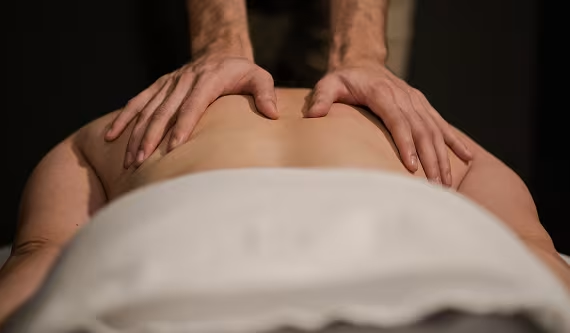Almost five hundred years ago, near a small town called Epsom in southern England, some people bathing in a natural spring noticed a salt-like substance in the water that seemed to leave their skin feeling soft. Fast forward to 2018, and that same natural substance (Epsom salt) can now be found in drug stores worldwide, used in a variety of health-related applications.
One of the most well-known uses for Epsom salt is as a bath additive, providing a soothing release after a hard run, or after a deep massage. Indeed, you may have already heard of ‘bath salts’; these are commercially-marketed mixtures of Epsom salt and a proprietary blend of scents and other chemicals. But you don’t need to go out and buy a designer product; to get the full healing effect of Epsom salt you can use it in its natural form and add safe elements like flowers for scent.
So what is Epsom salt anyway, and why is it so popular? In fact, Epsom salt isn’t really salt as we know it. It won’t add a very nice flavor to your food. Though it looks like table salt (sodium chloride), and you can ingest it, (it’s an FDA-approved laxative), it’s actually a blend of the natural minerals magnesium and sulfate, both of which are naturally present in our bodies, each with significant health benefits.
As a natural compound, Magnesium Sulfate helps eliminate dangerous heavy metals and supports the pancreas by elevating the quantity of digestive enzymes. On its own, Magnesium also helps manage enzyme production, enabling the optimal functioning of your body and the natural elimination of toxins and waste materials. Sulfate on the other hand is a protein-builder that focuses specifically on joints and the brain, and also supports waste elimination by helping to reinforce the digestive tract, thereby preventing seepage.
An unfortunate by-product of exercise is elevated tissue toxicity caused by the production of lactic acid in your muscles. A good massage will release those toxins from the muscle fibers where they can be eliminated by your body’s natural waste management system. The key here is ensuring your body has sufficient Magnesium Sulfate to handle the extra load. Luckily, the compound is easily absorbed through your skin, so a bath with Epsom salts is just the answer. Indeed, an Epsom salt bath won’t just help toxin removal; it’ll also help reduce stress by cutting tension and will leave your skin as smooth as a baby’s bottom.
For maximum benefit, mix two cups of Epsom salt into a bath of warm water, mix it around to ensure the salts have dissolved, and get in. Fifteen minutes is a recommended soak time; just make sure you don’t fall asleep!
Enjoy stress relief and improved focus through Chair Massage in West Edmonton.




